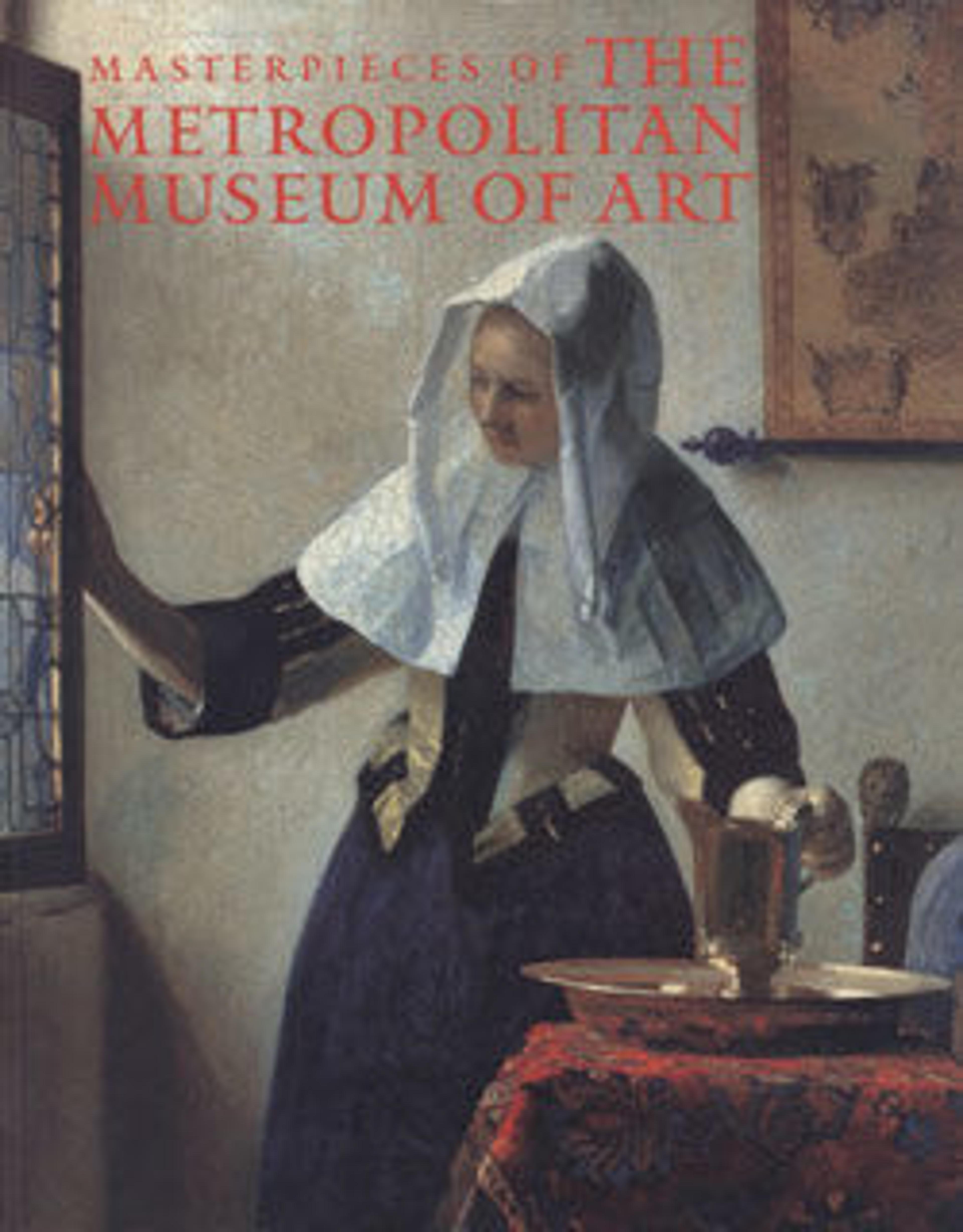Chasuble with the Gathering of the Manna
In this very rare example of a tapestry-woven ecclesiastical vestment, the more expected materials and techniques are imitated in trompe l'oeil: the main fabric simulating a pomegranate velvet and the pictorial scene, embroidery. The chasuble is part of a set that also includes two dalmatics (one in The Metropolitan Museum of Art and the other in the Los Angeles County Museum of Art). All three vestments bear the coats-of-arms of the De Vissher-van der Gheer and Van Culemborch families. The probable owner, Johannes De Vissher van der Gheer (ca.1527–1591), was canon of the Chapter Church of Saint Barbara at Culemborg and later vicar of the Chapter Church of Saint John at Utrecht. His motto, "We are bent, not broken, by the waves," describes not only the bulrushes depicted below, but also perhaps the effects on the wearer of the tumultuous political and religious climate of the Netherlands in 1570. The depiction of the Israelites gathering the manna that sustained them in the desert prefigures the eucharistic host. This reference would be clearly apparent at the moment of the Consecration, when the priest, who at that time celebrated the Mass facing the altar with his back to the worshipers, raised the host on high.
[Alice Zrebiec, 1996]
[Alice Zrebiec, 1996]
Artwork Details
- Title:Chasuble with the Gathering of the Manna
- Artist:After a print by Hieronymus (Jerome) Wierix (Netherlandish, ca. 1553–1619 Antwerp)
- Date:1570
- Culture:Netherlandish, probably Gouda
- Medium:Wool, silk, linen (16-18 warps per inch, 6-7 per cm.)
- Dimensions:H. 44 x W. 27 1/2 inches (111.8 x 69.9 cm)
- Classifications:Textiles-Tapestries, Textiles-Ecclesiastical
- Credit Line:Rogers Fund, 1954
- Object Number:54.176.2
- Curatorial Department: European Sculpture and Decorative Arts
More Artwork
Research Resources
The Met provides unparalleled resources for research and welcomes an international community of students and scholars. The Met's Open Access API is where creators and researchers can connect to the The Met collection. Open Access data and public domain images are available for unrestricted commercial and noncommercial use without permission or fee.
To request images under copyright and other restrictions, please use this Image Request form.
Feedback
We continue to research and examine historical and cultural context for objects in The Met collection. If you have comments or questions about this object record, please contact us using the form below. The Museum looks forward to receiving your comments.
